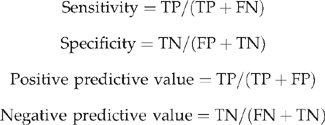Validation of surgical site infection surveillance in Perth, Western Australia
Leigh S. Goggin A D , Helen van Gessel B , Rebecca L. McCann A , Allison M. Peterson A and Paul G. Van Buynder CA Healthcare Associated Infection Unit, Department of Health, Perth, WA 6008, Australia.
B Office of Safety and Quality in Healthcare; Healthcare Associated Infection Unit, Department of Health, Perth, WA 6000, Australia.
C School of Population Health, University of Western Australia, Perth, WA 6009, Australia.
D Corresponding author. Email: leigh.goggin@health.wa.gov.au
Healthcare Infection 14(3) 101-107 https://doi.org/10.1071/HI09113
Published: 26 August 2009
Abstract
There is marked variation in the rate of surgical site infections (SSIs) following total hip and knee replacements reported by hospitals submitting data to the Healthcare Infection Surveillance Western Australia. A blinded retrospective case review was performed in order to determine if the differences were due to varying surveillance and reporting effectiveness. To further assess the quality of surveillance methodology the infection control professional at each site completed a paper-based, structured interview. A total of 444 patient charts were reviewed. Overall, the sensitivity of routine surveillance was 83%, the specificity 99%, the positive predictive value 94% and the negative predictive value 97%. The sensitivity varied between hospitals, ranging from 20 to 100%. The results of the methodology survey revealed fairly comparable surveillance practices at nine of the 10 hospitals. The hospitals with the lowest SSI rates were also those with the highest sensitivity to detect an SSI, suggesting that the difference in the quality of surveillance and reporting by each hospital is not responsible for the variation in SSI rates. The results of this study support the notion that those hospitals reporting the lowest SSI rates demonstrate high performance in both detection and prevention of SSI following hip and knee replacement surgery.
Acknowledgements
We would like to thank and acknowledge the contribution of the following hospitals: Armadale-Kelmscott Memorial Hospital, Fremantle Hospital, Hollywood Private Hospital, Joondalup Health Campus, Mount Hospital, Peel Health Campus, Royal Perth Hospital, Saint John of God Hospital Murdoch, Saint John of God Hospital Subiaco, and Sir Charles Gairdner Hospital.
[1] Kirkland KB, Briggs JP, Trivette SL, Wilkinson WE, Sexton DJ. The impact of surgical-site infections in the 1990s: attributable mortality, excess length of hospitalization, and extra costs. Infect Control Hosp Epidemiol 1999; 20 725–30.
| Crossref | GoogleScholarGoogle Scholar | CAS | PubMed | [verified July 2009].
[3] Dailey L, van Gessel H, Peterson AM. Two years of surgical site infection surveillance in Western Australia: analysing variation between hospitals. Healthc Infect 2009; 14 51–60.
| Crossref | GoogleScholarGoogle Scholar | [accessed March 2009] .
[5] McKibben L, Horan T, Tokars J, Fowler G, Cardo D, Pearson M, et al. Guidance on public reporting of healthcare-associated infections: recommendations of the Healthcare Infection Control Practices Advisory Committee. Am J Infect Control 2005; 33 217–26.
| Crossref | GoogleScholarGoogle Scholar | PubMed | [verified July 2009].
[7] Manniën J, Van der Zeeuw AE, Wille JC, Van den Hof S. Validation of surgical site infection surveillance in the Netherlands. Infect Control Hosp Epidemiol 2007; 28 36–41.
| Crossref | GoogleScholarGoogle Scholar | PubMed |

[8] Friedman ND, Russo PL, Bull AL, Richards MJ, Kelly H. Validation of coronary artery bypass graft surgical site infection surveillance data from a statewide surveillance system in Australia. Infect Control Hosp Epidemiol 2007; 28 812–17.
| Crossref | GoogleScholarGoogle Scholar | PubMed |

[9] Huotari K, Agthe N, Lyytikainen O. Validation of surgical site infection surveillance in orthopaedic procedures. Am J Infect Control 2007; 35 216–21.
| Crossref | GoogleScholarGoogle Scholar | PubMed |

Appendix 1
The following formulae were used to calculate the measures of validation.

TP, true-positive (a detected infection); TN, true-negative (a detected clean); FP, false-positive (a clean misclassified as an infection); FN, false-negative (a missed infection).

